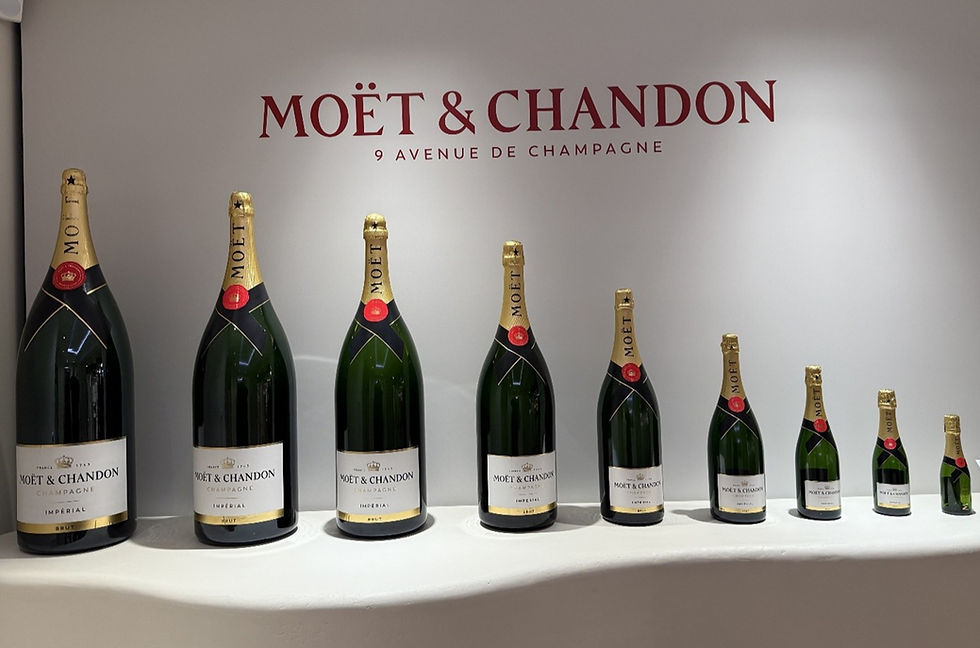There’s Tobacco in My Wine? An Exploration of Wine Aromas
- Marla
- Apr 23, 2019
- 3 min read
Updated: Mar 14, 2021
One of the most distinctive and important characteristics of a wine is how it smells. The aroma tells you a lot about what you’re about to drink and whether you’re going to like it. But wine aromas are more complicated than I first realized.

We received one of the most comprehensive lessons on wine aromas on our wine tour of Châteauneuf-du-Pape, in Provence, located in the Southeast of France.
The tour was led by our wonderful guide François Marcou, head of Avignon Wine Tours. François visits different wine regions in Provence on different days. The Châteauneuf-du-Pape wine region (which in France is called an appellation d'origine contrôlée, or AOC) is centered around the village of Châteauneuf-du-Pape.
According to François, a former Maître D’hôtel, there are seven families of wine aromas:
· Fruits – classical, citrus, and tropical
· Flowers – lavender, rose, etc.
· Food sensations – vanilla, honey, chocolate, mushrooms, caramel, and the like
· The soil – clay, volcanic rocks, etc.
· Oak/leather
· Spices – pepper, cinnamon, thyme, etc.
· Animal – horse sweat, cat urine
Francois’ tour was both one of the most educational and kitschy we’ve been on. For example, he plays theme music while we’re driving, which is great fun.
Francois suggests that to truly learn about the wine, one should smell the wine three times. He has a whole process for how to truly smell, taste, and understand wine. You start by smelling the wine aromas twice after viewing the color. For the second “nose,” you’re letting it breathe a little, and then the third “nose” is after you’ve tasted it, since you’ll discern more aromas then.

The wine aromas come from different aspects of a wine. Primary aromas are tied to the grape itself, such as the varietal or where it was grown. Secondary aromas come from the wine creation and fermentation process, such as whether it was barrel aged. Tertiary aromas relate to how the wine is aging, such as the amount of oxidation.
We put our wine aroma education to the test at three different wineries, including one in the basement, or “cave” of Le Verger des Papes, the restaurant where we had a wonderful al fresco lunch. The restaurant is in the shadow of a destroyed 13th century chateau.

Not surprisingly for a region of France with much ancient history, there was also an ancient wine cellar under the restaurant.

Many resources, including Francois, say that there are 84 different possible wine aromas. This is pictured in the image at the beginning of this article.
A few wine aroma kits break down the categories further into subcategories, listing more than 100 scents.
For instance, one wine aroma wheel with more than 100 aromas splits the scents into almost 20 categories. These include microbiol scents, like sourdough; noble rot (ginger, beeswax); sulfides (that’s where cat urine is listed there, as well as cured meat and onion); or problems with the cork (where you’ll find the scent of wet dog listed).
Some of the wine aromas are pretty obvious. It’s relatively easy to pick out jam, apple, or oak. If I’m on a roll, I might be able to discern orange, pepper or toast.
Of course, I’m lucky if I can discern more than four or five aromas at a time. But it’s fun to try, and we’re getting better at it. A lot of it is power of suggestion: if one of us thinks we may be smelling raisins, then I think that I can, too.
And frankly some of these wine aromas are outright esoteric. I’m not even sure I know what quince jelly, capsicum, and gooseberry smell like.
Then there are some scents I really don’t think I want to be smelling in my wine. Nail polish remover? Kerosene? Iodine? Tar?
Maybe smelling tobacco isn’t so bad. It’s not the same as drinking it!




Comments